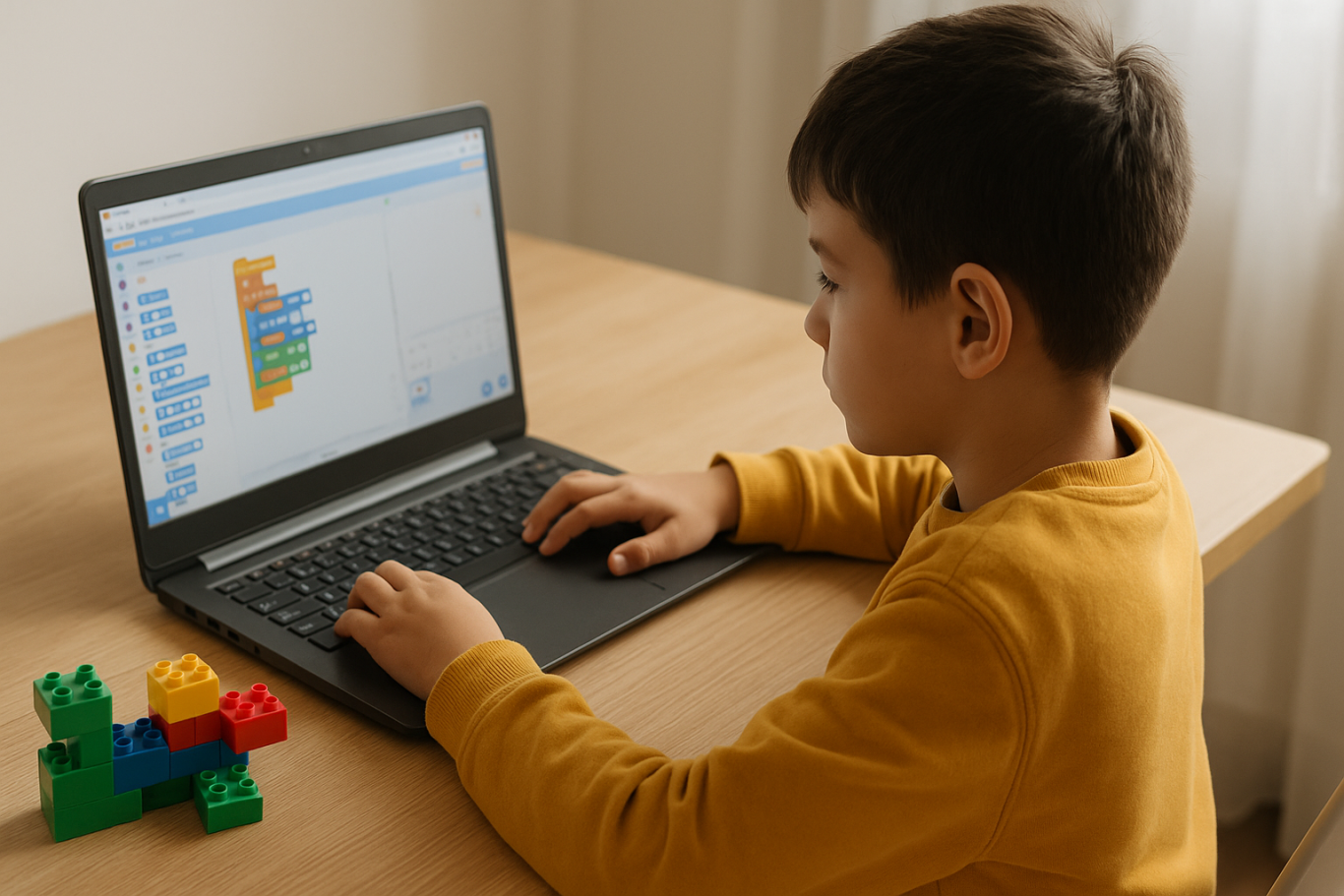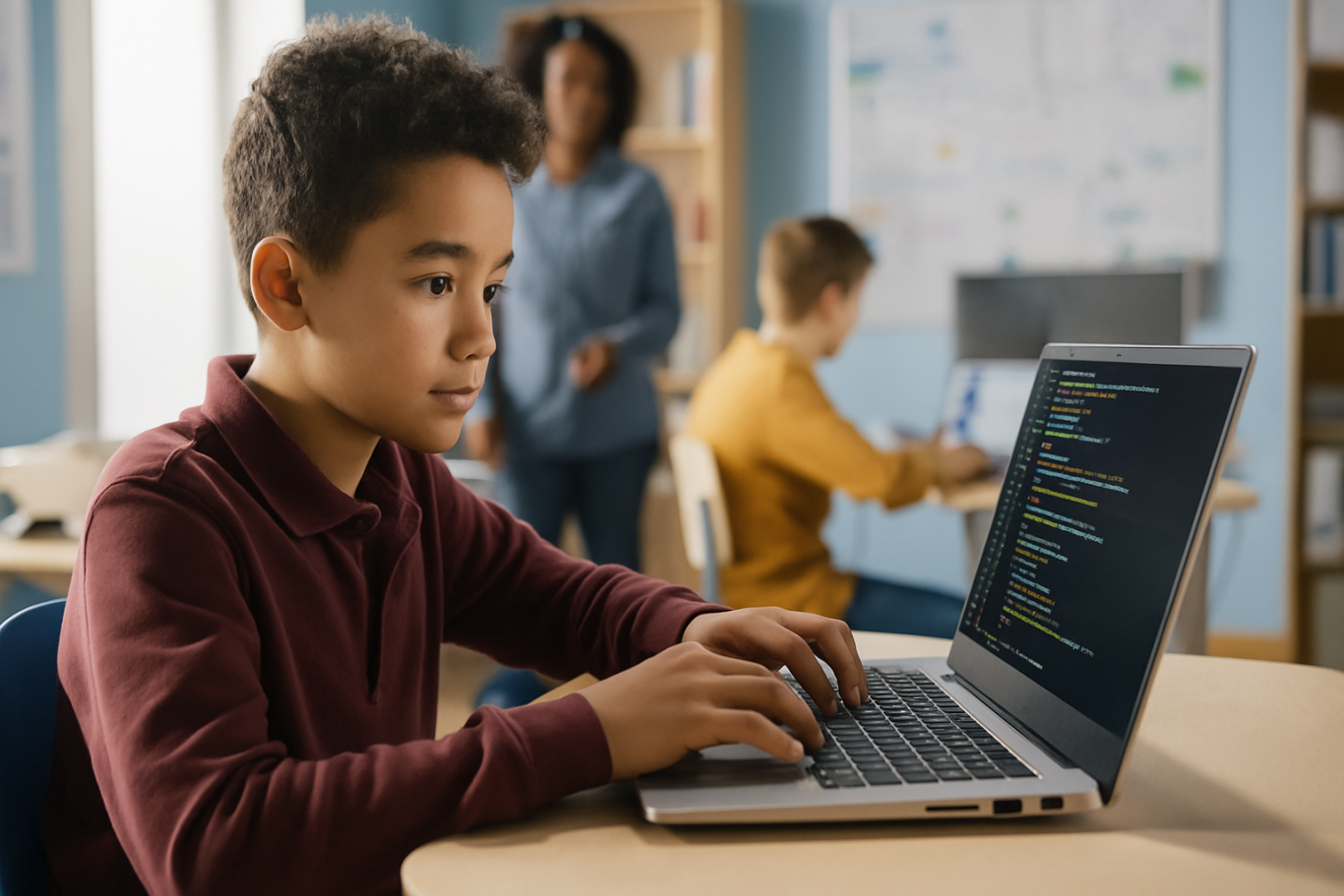Fun and Easy Coding Lessons for Kids in 2025
In today’s fast-moving digital world, coding has become an essential skill for children. It’s not just about preparing them to become future programmers, but also about helping them build logic, improve critical thinking, and solve problems in a structured way. That’s why introducing coding lessons for kids at an early age is a smart move for both parents and educators.
Teaching coding to children, especially those in elementary school, requires a different approach than teaching older students or adults. The material must be adapted to their level of understanding and presented in a way that is fun and interactive, so they stay engaged and motivated.
So, what kind of coding lessons for kids are best suited for young learners? Let’s explore the options.
Why Kids Should Learn Coding

Before diving into the types of coding lessons for kids, it’s important to understand why coding is valuable from a young age. Some of the key benefits include:
1. Strengthening logical thinking
Coding teaches kids how to think in steps and solve problems using logic. This helps develop structured and organized thought patterns.
2. Encouraging creativity
Through coding, children can build their own games, animations, and digital stories. It sparks imagination and creative expression.
3. Preparing for the digital future
As technology becomes more integrated into everyday life and future careers, understanding coding gives kids a head start and builds a strong foundation.
4. Building resilience
When something in their code doesn’t work, kids are encouraged to find solutions and try again. This helps develop patience and problem-solving skills.
Recommended Coding Lessons for Kids
There are many ways to introduce coding lessons for kids, depending on their age and learning style. Here are some great starting points:
1. Understanding Basic Logic and Algorithms

Before learning a programming language, kids need to grasp simple concepts like sequences, conditionals (if-then statements), and loops. These can be taught using hands-on activities like card games, unplugged coding puzzles, or guided problem-solving exercises.
2. Block-Based Programming

Block-based platforms are one of the most effective ways to start coding lessons for kids. Kids drag and drop visual blocks that represent code to complete tasks. Some popular platforms include:
- Scratch: Designed for children to build animations, games, and interactive projects.
- Code.org: Offers beginner-friendly lessons with characters and stories that keep kids engaged.
- Blockly: Similar to Scratch and great for easing the transition into text-based programming.
These tools make learning to code intuitive, visual, and fun.
3. Beginner Programming Languages

Once children are comfortable with block-based coding, they can begin to explore simple programming languages such as:
- Python: Known for its readability and simplicity, perfect for beginners.
- HTML & CSS: Great for kids interested in web design and layout.
- Basic JavaScript: Helps kids understand interactivity and logic on websites.
These coding lessons for kids should be introduced slowly and supported by mentors who understand how to guide young learners.
4. Real-Life Coding Applications

To make learning more meaningful, kids can be shown how coding is used in real life. They can build educational games, simulate everyday systems like traffic lights, create interactive calendars, or program basic robots using tools like Micro:bit or LEGO Robotics. These hands-on applications show that coding can be both fun and useful.
Tips for Teaching Kids to Code

For coding lessons for kids to be effective, the teaching method is just as important as the content. Here are a few tips:
- Use interactive visuals
Children understand and retain more when they see how things work. Use videos, animations, and coding games. - Make learning fun
Incorporate games, challenges, and reward systems to keep kids motivated and engaged. - Celebrate small wins
Recognizing achievements helps build confidence and encourages progress. - Keep it gradual
Avoid overwhelming kids by focusing on one concept at a time and allowing them to master it before moving on.
Start Early, Build Strong Foundations
The best coding lessons for kids are those that suit their developmental level, encourage creativity, and support essential skills like logical thinking and problem-solving. By starting early, children are not only introduced to the world of technology, but they also gain confidence in exploring and understanding how digital systems work around them.

Ingin tahu detail program?
If you’re looking for a program that makes coding accessible, fun, and age-appropriate, Timedoor Academy offers interactive lessons led by experienced instructors. Sign your child up for one of our engaging classes and take advantage of our free trial session. It’s the perfect way to introduce coding lessons for kids in a positive and meaningful way!